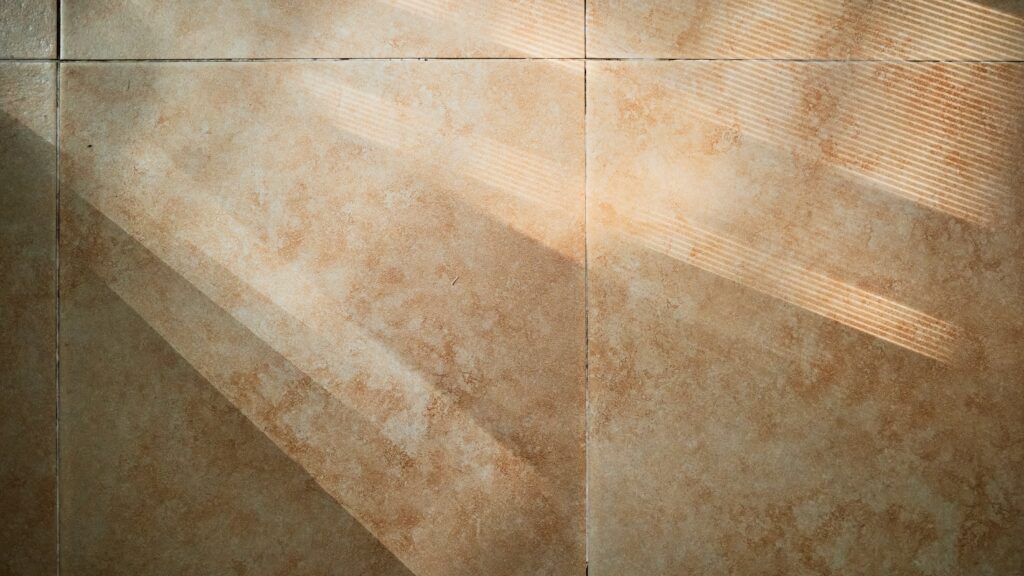
Travertine floor tiles are made of limestone and come in various beautiful earthy tones that can go in almost any room in any house. The style and coloring can transform your room from basic to prestigious. They are also durable and resistant to cracks and chips, making them a great flooring choice.
Travertine floors can become dull over time. This is natural and shouldn’t cause concern. We can help you learn how to polish your travertine floor tiles to restore their polish and shine.
How to Polish Your Travertine Floor Tiles
Step 1: Clean the Floors
This is the most important step in the process. Any dirt, dust, or debris not cleaned from the tiles will become embedded in the stone when you polish them. You must clean the floors using a damp towel or sponge to ensure all dirt, dust, and debris are removed from the tiles.
Step 2: Sand the Tiles
Before sanding the tiles, you will need to inspect them for any chips or cracks. While travertine floor tiles are extremely resistant to cracks and chips, they are not completely avoidable. If you notice any cracks or chips in your tile, you will need to avoid sanding them, as this can cause additional—and irreparable—damage to the tiles.
Use hand sandpaper to sand down the surface of the tiles. Do not use a power sander as this can be too aggressive on the tile’s surface and damage them. Instead, use sandpaper and sand the tiles by hand. This will remove the grime on the tile’s surface that may not come off during cleaning.
Step 3: Buff the Floor
This is when you can use a power tool. A buffing machine can be used on travertine floors because they rotate much slower than a power sander. You will need to use a 100-grit diamond polishing pad for your first pass. This will be abrasive enough to buff the surface of the tiles to prepare them for polishing but not too abrasive to damage the tiles.
Once you have buffed the floors with the 100-grit diamond polishing pad, you will need to replace the pad with a 200-grit diamond polishing pad and follow the same path. Then repeat this process using a 400-grit diamond polishing pad and an 800-grit diamond polishing pad.
This is when you will bring the polish and shine back into your travertine floor tiles. You can use the 800-grit diamond polishing pad as long as you need to restore the sheen back into the tiles.
To buff the floors, you will need to keep a few tips in mind:
- Use long, even strokes on your floor
- Don’t stay in one spot too long, or you can leave a mark on the flooring
- Make sure you only make one pass with each grit of sandpaper
Step 4: Mop the Floor
There is no doubt that sanding and buffing your travertine floor tiles will leave dust and debris. You will need to mop up all the dust so that your tiles are clean and show off the restored polish and shine. You don’t need to use any cleaner to do this. All you need is clean water and a mop. This will clean up all the dust and debris left behind on the floor from buffing.
(Optional) Step 5: Seal the Floors
This part isn’t necessary when polishing travertine floor tiles, but it’s recommended if you want to protect your travertine floors from losing their natural color or becoming stained from spilled liquids like red wine or tomato sauce.
You can seal the floors by applying a sealant with a paintbrush, sponge, or towel. The sealant should become absorbed in the stone in just a few minutes. If there is excess sealant on the stone after about five minutes, remove the sealant with a damp paper towel or cloth.
If you choose to seal the floors, make sure you don’t walk on them for at least two hours after applying the last coat of sealer.
And there you have it! By following these simple steps, you can polish your travertine floor tiles in no time, and they will look as good as new!
